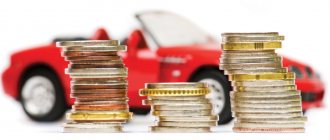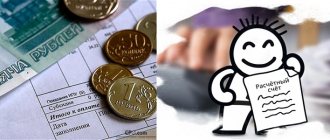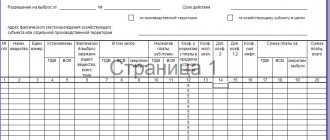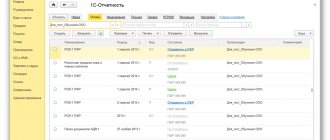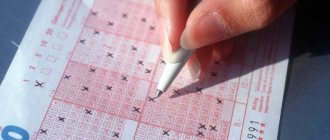Astral
September 11, 2021 9426
Taxes
Who is an agricultural producer?
Just in case, let us remind you: Unified agricultural tax can be used by those organizations and individual entrepreneurs that either produce agricultural products or provide services to agricultural producers in the field of livestock and crop production. This may not be agriculture itself, but activities directly related to it - for example, working with the landscape (replanting trees, etc.).
Moreover, simply engaging in agriculture is not enough - it is important that more than 70% of revenue comes from the production and sale of agricultural products (or services related to their production).
By using this special regime, the producer can also reduce the tax on the amount of agricultural expenses. These include, for example, the costs of purchasing seeds, seedlings, feed, and veterinary drugs. In this article we will not list a complete list of such expenses; you can find it in paragraph 2 of Art. 346.5 Tax Code of the Russian Federation.
Why did the agricultural producer become a VAT payer?
The need to reform the Unified Agricultural Tax has been discussed for a long time. The following problem was raised: entrepreneurs in the field of agriculture, subject to the Unified Agricultural Tax, “fell out” of the system for calculating and deducting value added tax and, in fact, were not its full participants. The natural consequence is the loss of customers, and therefore a deterioration in competitiveness.
All this follows from Letter of the Ministry of Finance of Russia dated January 24, 2021 No. 03-07-14/3564. You can view it here.
Sales of agricultural products purchased from the population
If an organization sells agricultural products or processed products purchased from the population, determine the VAT tax base as the difference between the market price and the purchase price of the specified products (clause 4 of Article 154 of the Tax Code of the Russian Federation).
In this case, two conditions must be met:
1. Agricultural products or their processed products must be purchased from citizens who are not entrepreneurs (letter of the Ministry of Finance of Russia dated December 7, 2006 No. 03-04-11/234).
2. Agricultural products and products of their processing must be included in the list approved by Decree of the Government of the Russian Federation of May 16, 2001 No. 383.
If both conditions are met, then calculate VAT on the sale of agricultural products as follows.
If sold agricultural products are subject to VAT at a rate of 18 percent, use the formula:
| VAT = Sales price – Purchase price × 18/118 |
If sold agricultural products are subject to VAT at a rate of 10 percent, use the formula:
| VAT = Sales price – Purchase price × 10/110 |
Such rules are established in paragraph 4 of Article 154 and paragraph 4 of Article 164 of the Tax Code of the Russian Federation.
If at least one of the conditions is not met, charge VAT in the usual manner - based on the full sale price (clause 1 of Article 154 of the Tax Code of the Russian Federation).
An example of reflecting in accounting the accrual of VAT on the sale of agricultural products purchased from the population
Torgovaya LLC retails food products. The store bought potatoes from a citizen who is not an entrepreneur for further resale. The purchase price of potatoes is 100,000 rubles. The store records goods at purchase prices.
The accountant reflected the receipt of potatoes as follows:
Debit 41 Credit 76 – 100,000 rub. – potatoes purchased from a citizen are capitalized;
Debit 76 Credit 50 – 100,000 rub. – money was paid to the citizen.
Revenue from the sale of potatoes amounted to 155,000 rubles. Potatoes are listed in the list of agricultural products approved by Decree of the Government of the Russian Federation of May 16, 2001 No. 383. When selling potatoes, a VAT rate of 10 percent is applied (subclause 1, clause 2, article 164 of the Tax Code of the Russian Federation). The amount of VAT accrued on the sale price of potatoes is equal to: (155,000 rubles – 100,000 rubles) × 10/110 = 5,000 rubles.
The Hermes accountant reflected the sale of potatoes to customers as follows:
Debit 50 Credit 90-1 – 155,000 rub. – receipts from customers for sold potatoes were received at the cash register;
Debit 90-3 Credit 68 subaccount “Calculations for VAT” – 5000 rubles. – VAT was charged on potatoes sold;
Debit 90-2 Credit 41 – 100,000 rub. – the cost of potatoes sold is written off.
If an organization purchases products simultaneously from both enterprises and the public, then in order to correctly determine the tax base for VAT, it is necessary to organize separate accounting of the purchased products. This can be done by opening additional sub-accounts to accounts 41 “Goods” and 90 “Sales”, which will separately reflect the cost of goods purchased from citizens and organizations.
An example of separate accounting of agricultural products purchased from citizens and organizations to determine the tax base for VAT
LLC "Torgovaya" capitalized 100 kg of bee honey, of which 50 kg was purchased from a citizen (not an entrepreneur) at a price of 50 rubles. per kilogram. The organization received the remaining 50 kg of honey from a wholesale organization at a price of 59 rubles. per kilogram (including VAT (18%) - 9 rubles). Accounting for goods in the store is carried out at purchase prices.
Hermes purchases products simultaneously from a wholesale organization and from citizens. Therefore, the Hermes accountant organized separate accounting of purchased goods.
Sub-accounts were opened for account 41:
- “Agricultural products purchased from organizations”;
- "Agricultural products purchased from the population."
To count 90:
- “Sale of goods purchased from organizations”;
- “Sale of agricultural products purchased from the population”;
- “Cost of goods purchased from organizations”;
- “Cost of agricultural products purchased from the population.”
The organization’s accountant reflected the receipt of honey as follows:
Debit 41 subaccount “Agricultural products purchased from organizations” Credit 60 – 2500 rub. (50 kg × (59 rub./kg – 9 rub./kg)) – honey received from a wholesale organization is capitalized;
Debit 19 Credit 60 – 450 rub. (50 kg × 9 rubles/kg) – input VAT on purchased honey is taken into account;
Debit 68 subaccount “Calculations for VAT” Credit 19 – 450 rub. – accepted for VAT deduction based on the seller’s invoice;
Debit 41 subaccount “Agricultural products purchased from the population” Credit 76 – 2500 rub. (50 kg × 50 rub./kg) – honey received from a citizen is capitalized;
Debit 60 Credit 51 – 2950 rub. (50 kg × 59 rub./kg) – payment to the wholesale organization is transferred;
Debit 76 Credit 50 – 2500 rub. – money was paid to the citizen.
All honey was sold at retail at a price of 68 rubles. per kilogram. Bee honey is included in the list of agricultural products approved by Decree of the Government of the Russian Federation of May 16, 2001 No. 383. When selling honey, a VAT rate of 18 percent is applied.
The accountant reflected the sale of honey as follows:
Debit 50 Credit 90-1 subaccount “Sale of goods purchased from organizations” - 3,400 rubles. (50 kg × 68 rub./kg) – revenue from the sale of honey purchased from a wholesale organization is reflected;
Debit 90-3 Credit 68 subaccount “VAT calculations” – 519 rubles. (RUB 3,400 × 18/118) – VAT is charged on proceeds from the sale of honey purchased from a wholesale organization;
Debit 90-2 subaccount “Cost of goods purchased from organizations” Credit 41 subaccount “Agricultural products purchased from organizations” - 2500 rubles. – the cost of sold honey purchased from a wholesale organization is written off;
Debit 50 Credit 90-1 subaccount “Sale of agricultural products purchased from the population” – 3,400 rubles. (50 kg × 68 rubles/kg) – revenue from the sale of honey purchased from a citizen is reflected;
Debit 90-3 Credit 68 subaccount “VAT calculations” – 137 rubles. ((3400 rub. – 2500 rub.) × 18/118) – VAT is charged on the difference between the sales price and the purchase price of honey purchased from a citizen;
Debit 90-2 subaccount “Cost of agricultural products purchased from the population” Credit 41 subaccount “Agricultural products purchased from the population” - 2500 rubles. – the cost of sold honey purchased from a citizen is written off.
Situation: is it possible to calculate VAT on the inter-price difference? The organization purchases agricultural products from the population and produces food products from them, which it then sells.
No you can not.
According to the Russian Ministry of Finance, the provisions of paragraph 4 of Article 154 of the Tax Code of the Russian Federation apply only to organizations that resell agricultural products purchased from the population (products of their primary processing) unchanged. The list of such agricultural products was approved by Decree of the Government of the Russian Federation of May 16, 2001 No. 383.
Moreover, if an organization sells agricultural products that were primarily processed by citizens, then it has the right to take advantage of preferential tax treatment only if the list names not only specific types of agricultural products (for example, tea leaves or ferns), but also the possible results of its primary processing (for example , semi-finished leather products or leather processing products). If an organization buys agricultural products mentioned in the list (primary processed products) from the population, then further processes them and then sells finished products (for example, sausages or semi-finished meat products), then it does not have the right to take advantage of the preferential rate. This organization must charge VAT on the entire amount of revenue (clause 1 of Article 154 of the Tax Code of the Russian Federation).
Such clarifications are contained in letters of the Ministry of Finance of Russia dated January 26, 2005 No. 03-04-04/01, dated April 27, 2002 No. 04-03-11/17. This point of view is supported by some arbitration courts (see, for example, the resolution of the Federal Antimonopoly Service of the Central District of October 8, 2008 No. A36-528/2008).
Advice: there are arguments that allow organizations to calculate VAT on the inter-price difference when selling processed agricultural products purchased from the population. They are as follows.
The condition for determining the tax base under paragraph 4 of Article 154 of the Tax Code of the Russian Federation is the purchase of agricultural products from citizens who are not VAT payers. Therefore, the procedure for calculating the VAT tax base established by this paragraph is applicable both when selling agricultural products themselves and when selling the results of their processing. Thus, an organization that sells goods made from agricultural products purchased from citizens (products of their primary processing) has the right to charge VAT on the difference between revenue and expenses for the purchase of agricultural products.
Some arbitration courts adhere to this position (see, for example, decisions of the FAS Volga District dated September 19, 2007 No. A65-3704/2006, North Caucasus District dated January 16, 2007 No. F08-6441/2006, Central District dated 9 February 2004 No. A48-2429/03-13).
In addition, in the resolutions of the Federal Antimonopoly Service of the Volga Region dated November 30, 2004 No. A55-4479/2004-31, dated October 12, 2004 No. A12-5452/04-C25, special emphasis was placed on the ambiguity of the legal norm contained in paragraph 4 of the article 154 of the Tax Code of the Russian Federation. According to the judges, it does not follow from the content of this paragraph that the procedure established in it applies only to operations for the sale of agricultural products purchased from citizens, without further processing. And since the list approved by Decree of the Government of the Russian Federation of May 16, 2001 No. 383 is not exhaustive, it cannot be concluded from it that it does not apply to finished products.
Sales of cars purchased from the public
If an organization sells cars previously purchased from citizens for resale, determine the VAT tax base as the difference between the market price (including VAT) and the purchase price of the vehicle (clause 5.1 of Article 154 of the Tax Code of the Russian Federation).
In this case, the following condition must be met. Cars must be purchased from citizens who are not entrepreneurs.
If this condition is met, then calculate VAT on car sales as follows:
| VAT = Sales price – Purchase price × 18/118 |
In this formula, the selling price is the price that the parties set when completing a purchase and sale transaction. It is assumed that the sale price corresponds to the level of market prices until the contrary is proven (clauses 1 and 3 of Article 105.3 of the Tax Code of the Russian Federation).
Such rules are established in paragraph 5.1 of Article 154, as well as in paragraphs 3 and 4 of Article 164 of the Tax Code of the Russian Federation.
If the specified condition is not met, charge VAT in the usual manner - based on the full sale price (clause 1 of Article 154 of the Tax Code of the Russian Federation).
An example of reflecting in accounting the accrual of VAT on the sale of cars purchased from the public
LLC "Torgovaya" conducts activities in the sale of vehicles. The store bought a VAZ-21140 passenger car from a citizen who is not an entrepreneur for further resale. The purchase price of the car is 150,000 rubles. The store records goods at purchase prices.
The accountant reflected the receipt of the car as follows:
Debit 41 Credit 76 – 150,000 rub. – a vehicle purchased from a citizen has been registered;
Debit 76 Credit 50 – 150,000 rub. – money was paid to the citizen.
The proceeds from the sale of the car amounted to 200,000 rubles. The amount of VAT accrued on the sales price of the car is equal to: (200,000 rubles – 150,000 rubles) × 18/118 = 7,627 rubles.
The Hermes accountant reflected the sale of the car to buyers as follows:
Debit 50 Credit 90-1 – 200,000 rub. – receipts from buyers for the sold car are received at the cash desk;
Debit 90-3 Credit 68 subaccount “VAT calculations” – 7627 rubles. – VAT is charged on the sold car;
Debit 90-2 Credit 41 – 150,000 rub. – the cost of the sold car is written off.
If an organization resells cars, purchasing them simultaneously from both organizations and the public, then in order to correctly determine the tax base for VAT, it is necessary to organize their separate accounting. This can be done by opening additional subaccounts to accounts 41 “Goods” and 90 “Sales,” which will separately reflect the cost of vehicles purchased from citizens and organizations.
A transition period is needed
According to Zlochevsky, it would be more appropriate to make such changes in the market in winter or early spring, when liquidity is not critical. “I cannot say that the measures of the Federal Tax Service are wrong, but they are extremely untimely,” he emphasizes. In addition, earlier during the period of mass harvest, intermediaries bought grain from farms, albeit at not the highest prices, but this gave farmers financial support and left time for work in the field. Now they are forced to spend time and resources themselves searching for buyers. According to the RZS, now there is actually a strengthening of state regulation of the market through the forceful pressure of the Federal Tax Service on the intermediary link. “We are categorically against the use of measures to “whitewash” the market as a tool for regulating it,” says Zlochevsky. “The market will regulate itself sooner or later, but for now it will continue to look for workarounds.”
The general director of the largest grain exporting company, TD RIF, Vadim Sarkisov, is convinced that the market has already responded to strengthening measures to combat VAT laundering, and now the Federal Tax Service should not have serious complaints. “There have already been major changes,” he says. — We try to purchase products directly from manufacturers. Many of them now independently deliver grain to exporters. Grain is now imported 99% without VAT.” More than 500 suppliers cooperate with Rif. According to the top manager, these are “smart people”; almost all of them understood that it was necessary to change the principles of work in accordance with the Charter. Although their personal income has probably decreased, he believes.
Until the beginning of June, the lion’s share of grain came from CPT deliveries (from the CPT format - “carriage paid to”) from commercial companies, but now 90% of purchases are without VAT, says the general director of another large export company, Evgeny Sidyukov. “We work directly with agricultural producers, and 90% of them use unified agricultural tax. To independently export grain, we hire transport companies that also work without VAT,” he says. — “Gray” schemes with refunds of “drawn” VAT are going away, now everyone has become more competitive in the sense of buying from farmers locally. The price at the port does not depend on the volume and is the same for a shipment of 100 tons or 1 thousand tons.” According to Sidyukov, all conscientious market participants benefited from the changes.
In general, the Federal Tax Service also has a positive assessment of the latest changes. “Due to the fact that the market is independently restructuring itself according to the rules adopted by market participants and prescribed in the Charter, a reaction from the Federal Tax Service is not required at the moment,” says the service’s response to Agroinvestor’s request. “Currently, the largest grain exporters, occupying more than 90% of the export market share, transfer over 70% of funds to agricultural producers and suppliers using the simplified tax system or under agency agreements excluding VAT.” Based on the results of the third quarter of 2021, the Federal Tax Service expects that the grain export market will be completely transparent. However, if unscrupulous market intermediaries resume or continue their activities to illegally optimize VAT, this will inevitably entail retaliatory measures, the Federal Tax Service promises.
It will not be easy to eradicate illegal transactions with VAT on the grain market, member of the board of directors (Belgorod region) Alexey Ivanov is convinced. “It is wrong to first create a defective legislative framework, and then use force to force market participants to adhere to this framework,” he believes. The top manager is also confident that the schemes will not change significantly, they will simply shift to other regions. Previously, VAT laundering was mainly carried out by companies from the North Caucasus, but now, for example, this will be practiced in the Urals or Siberia.
According to Ivanov, unscrupulous intermediaries are not yet going to leave the market. But at the same time, companies that previously collaborated with them and have switched to “white” operating schemes will still not be able to count on tax amnesty. “I know colleagues who have received notifications of on-site tax audits and do not expect anything good from them,” he shares. “The authorities are used to taking shortcuts. And market participants are afraid that now a team will follow to the courts, which will begin to make “correct” decisions based on the results of tax audits and charge everyone with additional VAT along with penalties and fines.”
This summer, market participants agreed to stop covering VAT and actually stopped doing this because they got scared, says Krasnodar commercial director Vladimir Voitsekh. “The pressure on traders is very serious. Several of my colleagues have already been arrested specifically in cases related to VAT transactions,” he says. — All grain suppliers for exporters now work without VAT, because no one needs problems. We have to play fair." Concerns among market participants reach the point that many are afraid of facing non-refund of absolutely legally declared and confirmed VAT at the end of the year. Up to a situation where the product manufacturer operates under OSNO conditions and this tax deduction can be lost. In many ways, the behavior of market participants will depend on how the Federal Tax Service begins to accept reporting on the results of the third quarter. Zlochevsky characterizes this scenario as the least favorable. “We are actively negotiating with the Federal Tax Service so that the forceful option is postponed until at least January 1, 2021. Now you can’t use hard pressure,” he believes. “The market will rebuild in any case, but a transition period is necessary.”

